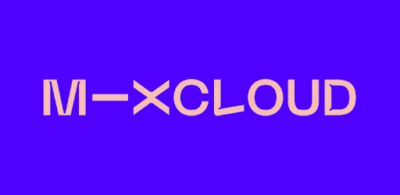1. Introduction
Choosing the right platform for selling photos is crucial for photographers and contributors looking to showcase their work and maximize their earnings. In this blog post, we will compare two prominent stock image providers, Alamy and Shutterstock, and help you make an informed decision. We will explore the features, image quality standards, market reach, pricing, licensing options, contributor experience, and more.
Whether you prioritize global exposure, competitive royalties, or customization options, this comparison will guide you in selecting the platform that aligns with your goals and suits your photography style. Join us as we delve into the Alamy vs Shutterstock debate and uncover the ideal platform for selling your photos.
Also Read This: Download Videos from OK.RU with This Epic Tool for Free
2. Alamy: Overview and Features

Alamy is a renowned stock image provider that offers a vast collection of high-quality images to buyers worldwide. With a history dating back to 1999, Alamy has established itself as a trusted platform for photographers and contributors seeking to monetize their creative work.
Key features of Alamy include:
1. Extensive Collection: Alamy boasts a diverse collection of over 235 million images, covering a wide range of subjects and themes.
2. Contributor-Friendly: Alamy offers a fair and transparent contributor agreement, ensuring that photographers receive competitive royalties for their sold images.
3. Global Market Reach: Alamy has a strong international presence, allowing contributors to reach buyers from various industries and regions.
4. Rigorous Quality Control: Alamy maintains stringent quality standards, ensuring that only high-quality and commercially viable images are accepted into their collection.
5. Versatile Licensing Options: Alamy provides a range of licensing options, including royalty-free and rights-managed, catering to the diverse needs of image buyers.
6. Dedicated Contributor Support: Alamy offers comprehensive support for contributors, including guidance on keywording, image optimization, and sales strategies.
Whether you're a professional photographer or an enthusiastic hobbyist, Alamy provides a platform to showcase and sell your images to a wide audience of buyers.
Also Read This: Here’s the Complete Guide on Bandcamp Downloader for Chrome
3. Shutterstock: Overview and Features
Shutterstock is a leading global provider of stock images, videos, music, and other creative assets. With its extensive collection and user-friendly platform, Shutterstock offers photographers and contributors an opportunity to monetize their work effectively.
Here are some key features of Shutterstock:
1. Vast Collection: Shutterstock boasts a massive library of over 350 million images, videos, and music tracks, providing a wide range of options for image buyers.
2. Global Market Presence: Shutterstock has a strong presence in the international market, reaching a broad audience of buyers, including businesses, publishers, and creative professionals.
3. Contributor-Focused Platform: Shutterstock prioritizes the needs of contributors, offering competitive royalties and flexible pricing models to ensure fair compensation for their work.
4. Advanced Search and Discovery Tools: The platform provides robust search and filtering capabilities, allowing buyers to find the exact images they need efficiently.
5. Easy Upload and Management: Shutterstock's contributor platform provides a streamlined process for uploading and managing image submissions, making it convenient for contributors to maintain their portfolio.
6. Enhanced Contributor Tools: Shutterstock offers additional tools and features, such as keyword suggestions, performance analytics, and marketing resources, to help contributors optimize their portfolio and increase their exposure.
With its global reach, user-friendly interface, and comprehensive contributor support, Shutterstock provides a compelling platform for photographers and contributors to showcase and sell their creative content to a wide range of buyers.
Also Read This: VectorStock Pricing: Everything You Need to Know
4. Table comparing Alamy and Shutterstock:
| Feature | Alamy | Shutterstock |
|---|---|---|
| Image library size | 200+ million | 150+ million |
| Image quality | High | High |
| Image pricing | Pay-per-download or subscription | Pay-per-download or subscription |
| Royalties | 50% for contributors | 33% for contributors |
| Search features | Advanced search | Advanced search |
| User interface | User-friendly | User-friendly |
| Customer support | Good | Good |
| Overall value | Good | Good |
Advantages of Alamy
- Larger image library
- More unique and creative images
- Better search features
- More user-friendly interface
Advantages of Shutterstock
- More affordable subscription plans
- Higher royalties for contributors
- Tight integration with Adobe Creative Cloud apps
The best stock image provider for you will depend on your specific needs and preferences. If you're looking for a large library of high-quality images, Alamy is a good option. If you're looking for a more affordable option or want to integrate stock images with Adobe Creative Cloud apps, Shutterstock is a good choice.
Ultimately, the best way to decide which provider is right for you is to try both and see which one you prefer. Both Alamy and Shutterstock offer free trials, so you can test them out before you commit to a subscription.
The following video is about comparison of Alamy and Shutterstock:
Also Read This: Wondering How to Get Shutterstock Images for Free? Use This Tool
5. Image Quality and Acceptance Criteria
Both Alamy and Shutterstock have strict quality standards and acceptance criteria to maintain the overall quality of their image collections.
Alamy's image quality standards focus on technical excellence, commercial viability, and relevancy. They require images to have good exposure, sharpness, and accurate colors. Alamy also emphasizes authenticity and encourages contributors to capture genuine moments and real-life situations. They have guidelines to ensure images do not have visible trademarks or copyrighted materials.
Shutterstock has similar quality requirements, with an emphasis on technical proficiency, market appeal, and legal compliance. They require images to have proper exposure, sharpness, and minimal noise. Images should be well-composed and have commercial potential. Shutterstock also has strict guidelines regarding intellectual property rights, and contributors must ensure they have the necessary releases and permissions for recognizable individuals, private properties, and copyrighted elements.
Both platforms employ a thorough review process where images are assessed by experienced reviewers. The review process ensures that only high-quality and legally compliant images are accepted into the collections.
Contributors should carefully review the specific guidelines and requirements of each platform to ensure their images meet the necessary quality and legal standards for acceptance.
Also Read This: Account Security: Exploring the Risks of Hacking Into a Photobucket Account
6. Market Reach and Exposure
When comparing the market reach and exposure provided by Alamy and Shutterstock, both platforms offer significant opportunities for photographers and contributors to showcase their work to a wide audience of potential buyers.
Alamy has a strong international presence, catering to clients from various industries and regions. Their expansive network of clients includes publishers, advertising agencies, media companies, and more. Alamy's global reach allows contributors to tap into a diverse market and potentially attract buyers from around the world.
Shutterstock, on the other hand, is renowned for its vast customer base and widespread market reach. With millions of active users, Shutterstock has a broad audience that spans across different industries and geographical locations. Their extensive distribution network ensures that contributors' images have the potential to reach a large number of potential buyers, including businesses, marketers, designers, and content creators.
Both Alamy and Shutterstock invest in marketing and advertising efforts to promote their platforms and attract buyers. They also provide search engine optimization (SEO) and advanced search functionalities to help buyers discover and access the images they need.
Ultimately, the market reach and exposure provided by both platforms are substantial, offering photographers and contributors ample opportunities to gain visibility and increase their chances of making sales. Contributors should consider their target audience and the specific industries they want to cater to when deciding which platform aligns best with their goals.
Also Read This: Leveraging Adobe Stock for Editorial Photography: Guidelines and Best Practices
7. Pricing and Royalty Rates

When comparing the pricing and royalty rates of Alamy and Shutterstock, there are some differences in their approaches.
Alamy operates on a simplified pricing model. They offer a 50/50 revenue split, where contributors receive a 50% royalty rate on each direct sale of their images. Alamy also offers optional distribution partnerships, where contributors can choose to distribute their images through Alamy's network of distribution partners. In such cases, the royalty rates may vary depending on the specific partner and licensing terms.
Shutterstock follows a tiered pricing structure based on the customer's subscription plan or image pack purchase. Contributors earn royalties based on their image's subscription or on-demand license usage. Shutterstock's royalty rates depend on the contributor's lifetime earnings with the platform, ranging from 15% to 40% of the net sales amount.
It's important to note that both platforms have their own pricing strategies and adjust their rates based on market factors, licensing type, and usage. Additionally, exclusive contributors may receive higher royalty rates or other benefits on both platforms.
Ultimately, the choice between Alamy and Shutterstock should consider the specific pricing and royalty structure that aligns with a contributor's revenue goals and preferences. It's recommended for contributors to review the detailed pricing and royalty information provided by each platform before making a decision.
Also Read This: IMDb ID Exploration: How to Find and Utilize Them
8. FAQ:
Q1: What is the difference between Alamy and Shutterstock?
ANS: Alamy and Shutterstock are both stock image providers that offer a wide variety of high-quality images, videos, and illustrations. However, there are some key differences between the two platforms.
- Image library size: Alamy has a larger image library than Shutterstock, with over 200 million images compared to Shutterstock's 150 million images.
- Image pricing: Alamy offers both pay-per-download and subscription plans, while Shutterstock only offers subscription plans.
- Royalties: Alamy pays contributors 50% of the sales price of their images, while Shutterstock pays contributors 33% of the sales price.
- Search features: Both Alamy and Shutterstock offer advanced search features, but Alamy's search features are generally considered to be more powerful.
- User interface: Both Alamy and Shutterstock have user-friendly interfaces, but Alamy's interface is generally considered to be more intuitive.
- Customer support: Both Alamy and Shutterstock offer good customer support, but Alamy's customer support is generally considered to be more responsive.
Q2: Which stock image provider is better?
ANS: The best stock image provider for you will depend on your specific needs and preferences. If you're looking for a large library of high-quality images, Alamy is a good option. If you're looking for a more affordable option or want to integrate stock images with Adobe Creative Cloud apps, Shutterstock is a good choice.
Q3: What type of images sell best on Alamy and Shutterstock?
ANS: The type of images that sell best on Alamy and Shutterstock vary, but some of the most popular types of images include:
- Photos of people: Photos of people are always popular, especially photos that show people in interesting or creative ways.
- Photos of nature: Photos of nature are also popular, especially photos that capture the beauty of landscapes, animals, or plants.
- Photos of business and technology: Photos of business and technology are also popular, especially photos that show people using technology or working in a business setting.
- Photos of food and drink: Photos of food and drink are also popular, especially photos that make food look delicious.
- Photos of lifestyle and culture: Photos of lifestyle and culture are also popular, especially photos that capture the diversity of people and cultures around the world.
Q4: How do I get started selling photos on Alamy and Shutterstock?
ANS: To get started selling photos on Alamy and Shutterstock, you'll need to create an account and upload your photos. Alamy and Shutterstock have different requirements for photos, so be sure to read the guidelines carefully before you upload your photos.
Once you've uploaded your photos, they will be reviewed by Alamy or Shutterstock's team of editors. If your photos are approved, they will be added to the Alamy or Shutterstock library and you'll start earning royalties when people download your photos.
Q5: How much can I earn selling photos on Alamy and Shutterstock?
ANS: The amount of money you can earn selling photos on Alamy and Shutterstock depends on a number of factors, including the type of images you sell, the number of downloads you get, and the pricing plan you choose.
In general, you can expect to earn between 20% and 50% of the sales price of your images. So, if you sell a photo for $10, you could earn between $2 and $5 in royalties.
Q5: Is it worth selling photos on Alamy and Shutterstock?
ANS: Whether or not it's worth selling photos on Alamy and Shutterstock depends on your individual goals. If you're looking to make a full-time income from selling photos, it may not be realistic. However, if you're looking to earn some extra money or build a portfolio of your work, selling photos on Alamy and Shutterstock can be a great way to do it.
9. Conclusion:
In conclusion, when choosing between Alamy and Shutterstock as a platform for selling photos, photographers and contributors must consider several factors. Alamy offers a unique approach with its focus on quality, authenticity, and a 50/50 revenue split. It has a strong international presence and attracts a diverse range of clients. On the other hand, Shutterstock boasts a massive customer base, extensive market reach, and a tiered pricing structure based on subscription plans or image pack purchases.
Ultimately, the right platform depends on individual preferences, target market, and revenue goals. Photographers should carefully evaluate each platform's features, image quality standards, market reach, pricing, and royalty rates to make an informed decision that aligns with their specific needs and aspirations.















